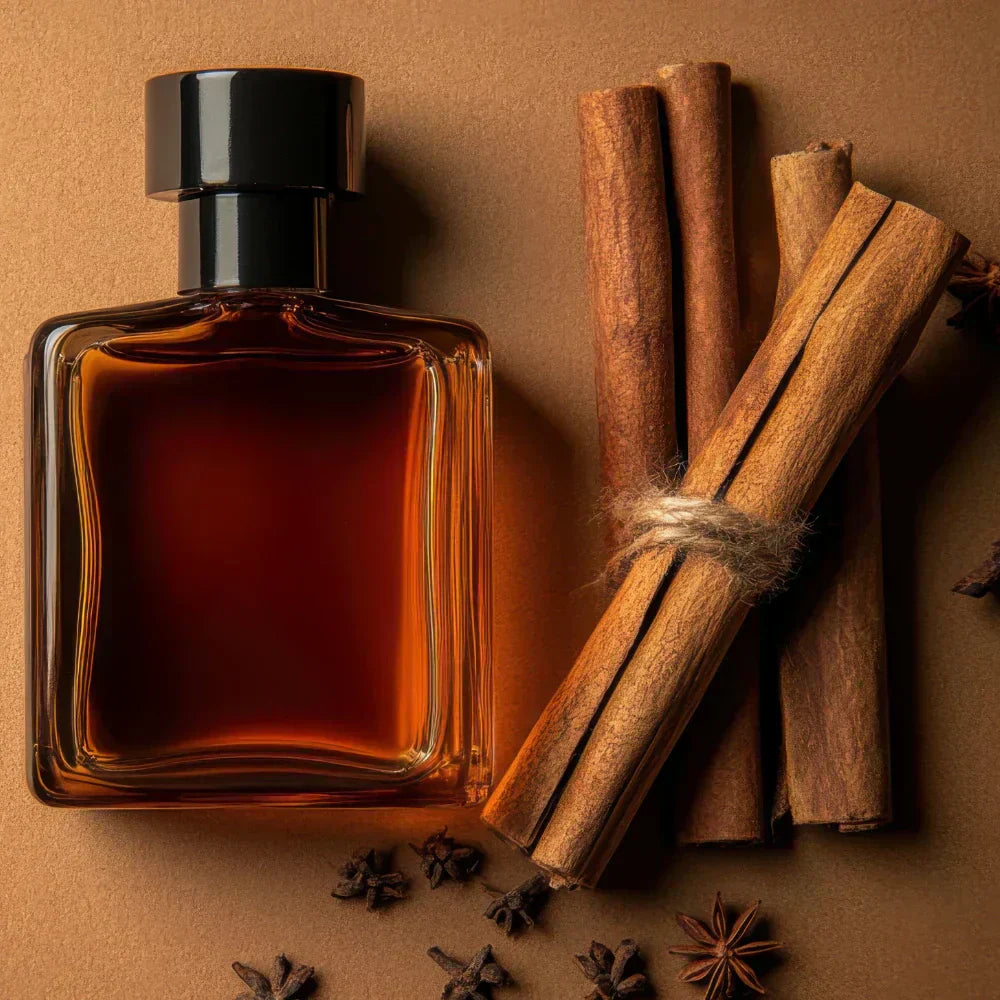
How to make your own Fragrance
Share
How to Make Fragrance/Perfume at Home: A Step-by-Step Guide
The art of perfume-making has been around for centuries, but the idea of creating your own fragrance at home can feel like a luxury reserved for professionals. However, making your own perfume at home is not only possible, but it can be a fun and rewarding creative process.
Whether you're looking to craft a signature scent for yourself or gift a bespoke fragrance to someone special, learning how to make perfume is a wonderful way to engage with your senses.

In this blog, we’ll walk you through the basics of perfume-making at home, from choosing your ingredients to blending the perfect scent. So, grab your supplies, and let's dive into the world of homemade fragrance creation!
Understand the Structure of Perfume
Before you begin making perfume, it's important to understand the basic structure of a fragrance. Perfumes are made up of three types of notes: top, middle (or heart), and base notes. Each note is made up of essential oils and contributes to the overall scent in different ways.
- Top Notes: These are the first scents you smell when you apply perfume. They are light, fresh, and often citrus or herbal in nature. Top notes tend to evaporate quickly, usually within the first 15–30 minutes. Examples include lemon, lavender, or mint.
- Middle (Heart) Notes: These scents emerge after the top notes dissipate. They form the heart of the fragrance and are often floral, fruity, or spicy. Heart notes last a few hours and balance the freshness of top notes with the richness of base notes. Examples include rose, jasmine, or cinnamon.
- Base Notes: These are the deep, rich scents that last the longest and provide depth to the perfume. They give the fragrance its staying power and are usually musky, woody, or sweet. Base notes linger for hours or even days. Examples include vanilla, sandalwood, or patchouli.
A well-balanced perfume will have a harmonious blend of all three notes. The key to making a great fragrance is understanding how these notes work together to create a pleasing and lasting scent.
Gather Your Supplies
To create your own fragrance at home, you’ll need a few essential supplies. Here’s what you’ll need:
- Essential Oils: These are the building blocks of your perfume. You can choose from a wide variety of essential oils, depending on the scent you want to create. Look for high-quality, 100% pure essential oils for the best results. You can buy essential oils at most health food stores or online. Some popular oils for perfume-making include:
- Top Notes: Lemon, bergamot, grapefruit, lavender
- Middle Notes: Rose, jasmine, geranium, cinnamon
- Base Notes: Sandalwood, vanilla, amber, musk
- Carrier Oil: You’ll need a base oil to dilute the essential oils, as they are too strong to apply directly to your skin. Popular carrier oils include jojoba oil, sweet almond oil, or fractionated coconut oil. Jojoba oil is especially good for fragrance because it is odourless and absorbs well into the skin.
- Alcohol: If you want your fragrance to be a traditional eau de parfum (a sprayable liquid), you'll need alcohol to help the scent dissolve and become wearable. You can use high-proof vodka or perfumer's alcohol. If you prefer a more oil-based perfume, skip the alcohol and rely only on carrier oils.
- Perfume Bottles: You can find empty perfume bottles at most craft or beauty stores. Alternatively, small glass vials with droppers also work well for storing your homemade perfume.
- A Funnel: For transferring your perfume into bottles without making a mess.
- A Glass Stirring Rod or Stirring Stick: To mix your ingredients in a clean and controlled manner.
- A Small Funnel (optional): For easy transfer of the liquid into your bottle.
Choose Your Scent Profile
Now comes the fun part: choosing your fragrance profile! Think about the kind of scents you are drawn to, do you like fresh and floral fragrances, deep and musky scents, or something sweet and vanilla infused? It’s best to start with a simple scent family, combining one or two top notes, one middle note, and one base note.
Some Popular Scent Combinations:
- Floral Fantasy: Top note: lavender, Middle note: rose, Base note: sandalwood
- Citrus Spice: Top note: bergamot, Middle note: cinnamon, Base note: vanilla
- Woodsy Aromas: Top note: lemon, Middle note: rosemary, Base note: patchouli
- Tropical Breeze: Top note: grapefruit, Middle note: ylang-ylang, Base note: coconut
Try to pick scents that complement each other and consider how they will develop over time. Remember, balance is key.
Mix Your Ingredients
Once you’ve chosen your oils and carrier oils, it’s time to mix. You can use a small glass container to create your perfume, or if you want more precision, try using a glass dropper to add your oils directly into a glass bottle.

Basic Recipe for Oil-Based Perfume:
- 20-30 drops of essential oils (blend your top, middle, and base notes)
- 1 tablespoon (15 ml) of carrier oil (like jojoba or sweet almond oil)
Basic Recipe for Alcohol-Based Perfume:
- 15-20 drops of essential oils (blend your top, middle, and base notes)
- 2 tablespoons (30 ml) of alcohol (vodka or perfumer’s alcohol)
- 1 tablespoon (15 ml) of distilled water (optional, for a lighter scent)
Steps:
- Add Your Base Notes: Start by adding the base notes to your container. Base notes are the heaviest, and they will form the foundation of your fragrance. Begin with 5-7 drops of your chosen base note(s).
- Add Your Middle Notes: Next, add the middle notes. These should account for 10-15 drops of the overall blend.
- Add Your Top Notes: Finally, add the top notes. These are lighter and should only account for 5-7 drops of your fragrance.
- Mix and Test: Stir the oils gently and smell the blend. It’s important to test your fragrance at this stage because the oils will blend and change in intensity over time. Add more drops of any note that you feel is lacking, or balance out the fragrance by adding more of another note.
- Let It Rest: Once you’re happy with your blend, let your perfume sit for at least 48 hours. The oils will blend together and mature over time, creating a richer and more well-rounded scent.
Store and Use Your Perfume
Once your perfume has rested, it’s time to transfer it into a perfume bottle. Use a small funnel for easy pouring, and make sure to label your perfume with its name and the date it was made. Store your perfume in a cool, dark place, away from direct sunlight, to preserve its fragrance.
How to Apply Homemade Perfume:
- Pulse Points: Apply the perfume to pulse points, such as your wrists, behind your ears, and the inside of your elbows. These areas emit heat, which helps diffuse the fragrance.

- Avoid Rubbing: Don’t rub your wrists together after applying perfume, as this can break down the fragrance molecules and diminish the scent.
Experiment and Customise
One of the best parts about making perfume at home is the ability to experiment and create something completely unique. You can try blending different oils, adjusting the ratio of top, middle, and base notes, and even experimenting with different carrier oils or alcohols. Over time, you’ll develop a sense of how different fragrances work together, and you’ll be able to create a signature scent that’s truly yours.
Not only does creating your own perfume give you the freedom to experiment with different scents, but it also offers a sense of pride and connection to the product you’re wearing. So, gather your supplies, pick your favourite notes, and start blending, soon you’ll have a signature scent that’s just as unique as you are.
